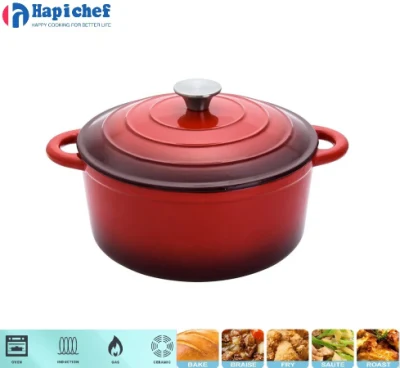Exploring the Benefits of Cooking with Cast Iron Pizza Pans for Perfect Pizzas
Using a Cast Iron Pizza Pan The Ultimate Guide to Perfect Pizza at Home
When it comes to pizza, most people might think of using a traditional pizza stone or a prefabricated baking tray. However, one of the best-kept secrets among pizza enthusiasts is the cast iron pizza pan. Not only does it help achieve a perfectly crispy crust, but it also adds a unique flavor and cooking versatility that other options simply cannot match. In this article, we will delve into the advantages of using a cast iron pizza pan, techniques for achieving pizza perfection, and tips for maintaining your pan for years of delicious meals.
Why Choose a Cast Iron Pizza Pan?
Exceptional Heat Retention and Distribution
Cast iron cookware is renowned for its ability to retain heat, which is essential for cooking pizza evenly. Unlike thinner metal pans that can cool down quickly, a cast iron pizza pan maintains a consistent temperature throughout the cooking process. This means that your pizza will cook evenly, giving you a golden-brown crust with delightful, crispy edges.
Versatile Cooking Methods
Another advantage of using a cast iron pizza pan is its versatility. You can use it in the oven, on the stovetop, or even over an open flame if you're cooking outdoors. This flexibility allows you to experiment with various cooking methods, including baking, sautéing, or even grilling your pizza, giving you the opportunity to create unique flavors and textures that you may not achieve with a traditional pizza stone.
Durability and Longevity
Investing in a cast iron pizza pan is a decision that will pay off in the long run. Cast iron is incredibly durable and, with proper care, can last for generations. It develops a natural non-stick surface over time, which improves with use. Unlike non-stick pans that can wear off and require replacement, a well-seasoned cast iron pizza pan will become better with age.
Tips for Using a Cast Iron Pizza Pan
Seasoning Your Pan
using cast iron pizza pan

Before you start making pizza, it's crucial to properly season your cast iron pan. Seasoning creates a natural non-stick layer and prevents rusting. To season your pan, wash it with warm water and mild soap, then dry it thoroughly. Apply a thin layer of vegetable oil or flaxseed oil to the surface and place the pan upside down in an oven preheated to 375°F (190°C) for about an hour. Allow it to cool in the oven before using. Repeat this process several times to build up a robust seasoning.
Preheating the Pan
For that perfectly crispy crust, preheating your cast iron pizza pan is essential. Place the empty pan in the oven as it heats up to your desired temperature (typically around 475°F to 500°F or 245°C to 260°C). Preheating allows the bottom of the pizza to start cooking immediately upon contact, helping to form that coveted crunch.
Using the Right Dough
Choosing the right pizza dough can significantly impact your outcome. For a traditional Neapolitan-style pizza, thin and stretchy dough is ideal. If you prefer a thicker, more bread-like texture, consider using a thicker dough. Remember to let your dough rise adequately for the best results. Using a warm environment can help the dough develop a nice texture and flavor.
Toppings and Baking
When it comes to toppings, less is more. Overloading your pizza can lead to a soggy crust, which defeats the purpose of using a cast iron pan. Opt for a moderate amount of sauce, cheese, and toppings to allow the heat to circulate freely and cook the pizza evenly. Once you've assembled your pizza, carefully transfer it to the preheated pan and bake for about 10-15 minutes until the cheese bubbles and the crust turns a beautiful golden brown.
Caring for Your Cast Iron Pizza Pan
Proper maintenance will ensure that your cast iron pizza pan remains a staple in your kitchen for many years. After each use, avoid soaking the pan in water. Instead, clean it while it’s still warm with a brush or sponge and a small amount of soap if necessary. Rinse, dry thoroughly, and reapply a thin coat of oil before storing. Avoid using metal utensils that can scratch the surface, and be cautious with extreme temperature changes to prevent cracking.
Conclusion
Utilizing a cast iron pizza pan opens up a world of possibilities for pizza lovers wanting to create restaurant-quality pies at home. With its excellent heat retention, versatility, and longevity, it's an investment that will elevate your cooking game. By mastering the techniques and care tips outlined in this guide, you're on your way to impressing friends and family with homemade pizza masterpieces. So dust off that cast iron pan, and let your pizza-making adventures begin!
-
Why Every Kitchen Needs a Casserole Cast Iron DishNewsJun.24,2025
-
Experience the Tradition and Quality of Cast Iron CookwareNewsJun.24,2025
-
Double Sided Cast Iron Grill PanNewsJun.24,2025
-
Cast Iron Dutch Ovens You’ll Actually UseNewsJun.24,2025
-
Buy Cast Iron Griddle for Everyday CookingNewsJun.24,2025
-
Barbecue Iron Grill Cooking PowerNewsJun.24,2025
-
Standard Product Lines from Cast Iron Cookware SuppliersNewsJun.11,2025
